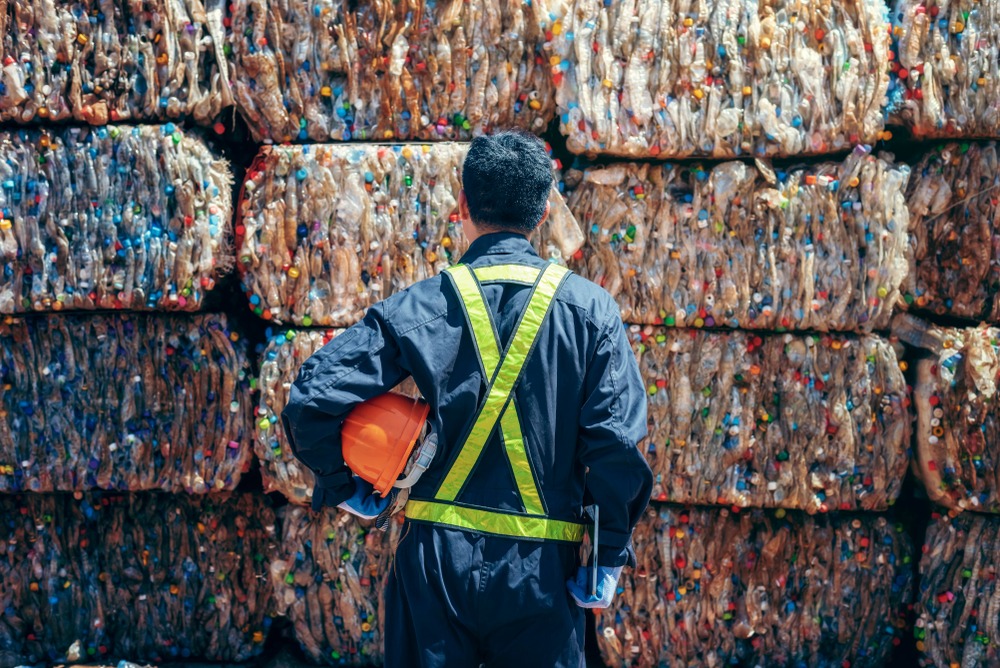Trade shows have been a crucial aspect of the business world for centuries. Companies and customers have utilized these exhibitions to buy and sell products and exchange ideas globally. However, the negative impact of waste generated at events on the environment has been an ongoing concern and challenge in the industry. On average, events produce 2.5 pounds of landfill waste per person, per day.

For the last 15-20 years, green meetings and organized gatherings aimed at minimizing negative impacts on the environment have been a concept, but in 2020, after the Covid-19 pandemic, they became a widespread topic in the events industry. As a result, Events Industry Council (EIC) updated its standards in 2022 to enhance sustainable practices across the events industry. Additionally, EIC introduced a new certification for event professionals interested in promoting sustainability and social impact in their organizations and global business events.
It’s becoming increasingly important for events to adopt sustainable best practices, and people are more aware of this than ever before. Recent surveys by both Hilton and Marriott support this, with 74% of travelers agreeing that it’s important to minimize their environmental footprint and 77% wanting to visit environmentally friendly destinations that align with their values.
As attendees become more interested in a more sustainable future, event planners must adapt and provide more regenerative and sustainable approaches to events. The best method of action is circularity, which takes a holistic approach that considers the environment, people, communities and our collective future. This approach focuses on reducing, reusing, remanufacturing, refurbishing, reselling, rebuilding, repairing, recycling and composting. Circularity will potentially become the largest Unique Value Proposition (UVP) for trade shows, with some leading events, such as Pack Expo Las Vegas, CES, and World of Concrete, already starting to market the actions they are taking around sustainability as a benefit for their audience.
Talking the Talk and Walking the Walk
Circularity is a concept that refers to the idea of designing products and systems in a way that eliminates waste and promotes the reuse of resources. In the context of trade shows, this means designing the event in a way that minimizes waste and promotes sustainability. For example, trade shows can use reusable materials for displays and signage, offer recycling stations throughout the event, and encourage attendees to bring their own reusable cups and containers.
Read More: Ditching the Dump
Implementing circularity in trade shows is important for several reasons. First, it helps to reduce the environmental impact of the event. By minimizing waste and promoting sustainability, trade shows can reduce their carbon footprint and contribute to a more sustainable future. Second, it can save companies money. By using reusable materials and reducing waste, companies can save on the cost of materials and disposal fees. Finally, implementing circularity can also benefit attendees. By promoting sustainability and environmental responsibility, trade shows can help to educate attendees and inspire them to make more sustainable choices in their own lives. This can have a ripple effect that extends far beyond the event itself.
According to the PCMA Meetings Market Survey released in November 2023, three out of five event planners said they have made sustainability practices more of a priority since the pandemic, and 31% include sustainability practices in their RFPs.
In accordance, some groups are already taking a proactive approach to circularity. NPE: The Plastics Show, produced by the Plastics Industry Association (PLASTICS), has collected diversion and sustainability metrics for years, and for its upcoming NPE2024, they are planning on diverting 100% of the recyclable plastic scrap generated during the event to reduce the impact on natural resources and minimize waste. NPE2024 will also include a fully functional indoor and outdoor 10,500 net-square-feet recycling center during the show that will also provide live demos, a Circularity Hub focused on sustainable materials and an all-new off-site film recycling program, two Recycling & Sustainability Zones for all exhibitors creating a greener plastics economy, and a Sustainability Stage with 25+ speakers highlighting solutions to reduce material loss and improve efficiencies.
Another organization making strides toward circularity is the American Clean Power Association (ACP). For their 2023 event, CLEANPOWER, they worked with a sponsor to customize an exhibitor sustainability program. They required exhibitors to limit their printed collateral and promotional giveaways, offered an eco-friendly shipping option, and required booth electronics to be powered down overnight. CLEANPOWER 2024 will continue to present a sustainability sponsorship and look at further ways to have sustainability at the core of their event design.
On the Horizon for 2024 and Beyond
Businesses, take note! In the near future, companies will likely require their employees to provide sustainability reports after attending any event. It is only a matter of time before these corporate-level requirements trickle down to events. As the world faces challenges on a global scale, businesses are increasingly realizing the importance of building sustainable and resilient models, and trade shows are no exception.
Read More: Sustainability as a Practice
The key to achieving these audacious goals is ensuring that sustainability metrics are included upfront during the strategic planning process of every large-scale event.
—
Jack Macleod is president at 360 Live Media. He leverages over 20 years of experience in the marketing, technology and media sectors to enhance the value proposition for clients, strengthen the industry and increase the impact of business events.




